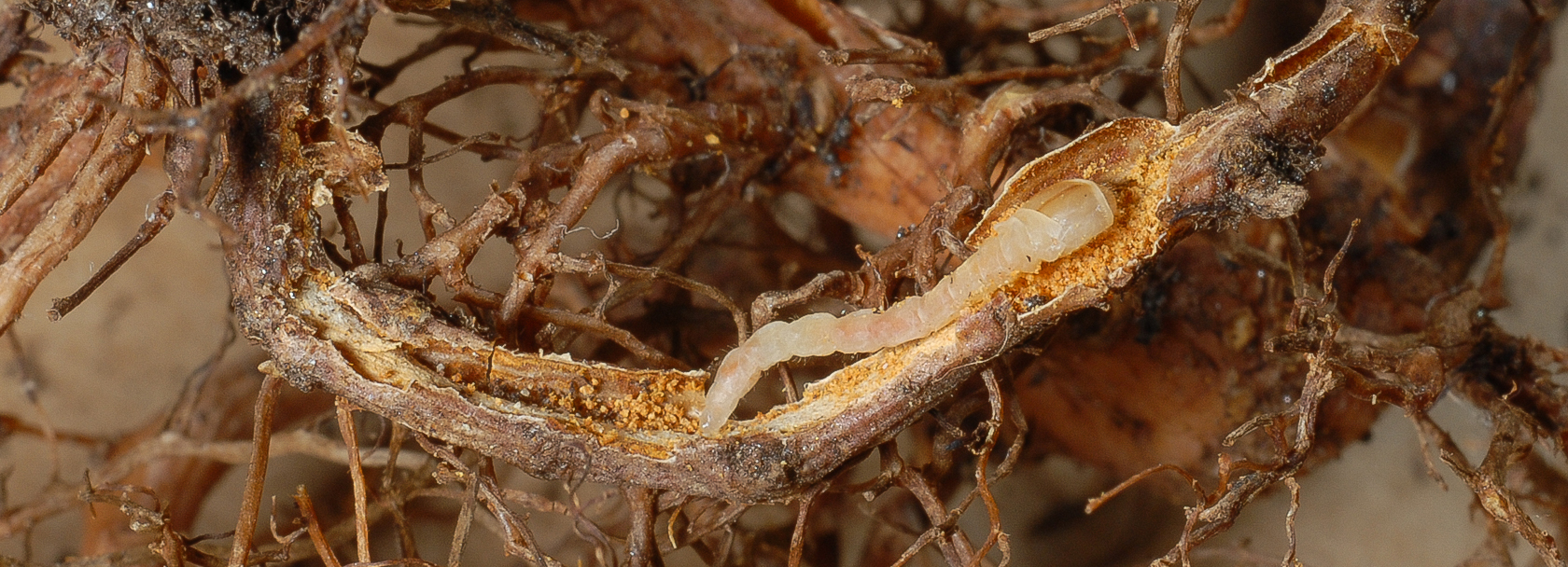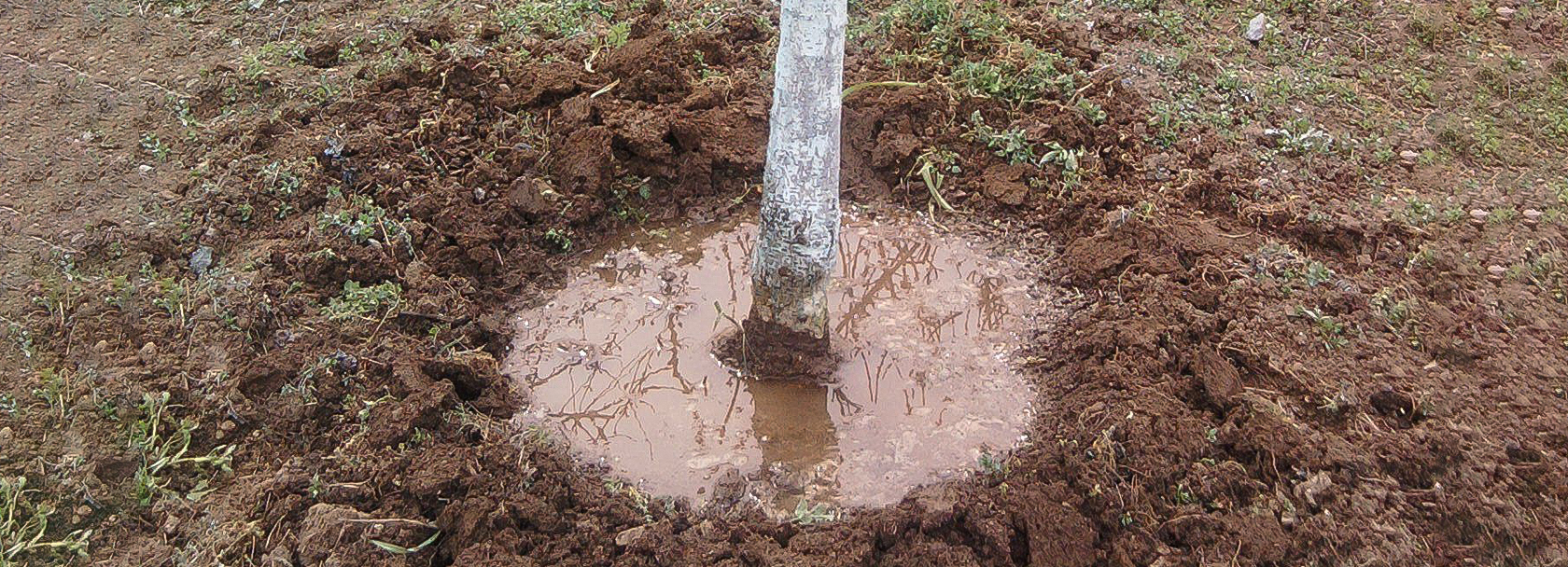Flat-headed
Control Flat-headed rootborer bilogically
Capnodis tenebrionis
The flat-headed rootborer is a common pest in Mediterranean areas and occurs on trees of stone fruits such as cherry, apricot, peach, nectarine, plum and almond. It is 15-20 millimeters in length, is rowan-shaped with a retracted head, and has dark elytra.
Life cycle of the flat-headed rootborer
The life cycle of the flat-headed rootborer beetle lasts 13 months. The adult beetles emerge from the ground in April and lay their eggs in the soil around the trees from June to August.
The larvae hatch in the soil and eat their way through the roots and trunk of the tree during the fall and winter, where they pupate in the spring.
In August, new adult beetles hatch and bore outward through the tree trunk. This causes the typical damage of boreholes up to about 50 cm trunk height.
The beetles overwinter in the soil and reappear in April to lay eggs again. Larvae can be found throughout the year.
What is special to know?
Peach shoot moth (Grapholita molesta), chestnut borer (Zeuzera pyrina), and willow borer (Cossus cossus) are pests that often occur at the same time as the flat-headed rootborer (Capnodis tenebrionis) and can also be controlled with nematodes.
Damage caused by the larvae of the flat-headed rootborer
The main damage is caused by the larvae: during the fall and winter months, they feed in tunnels between wood and bark through the roots and into the trunks of trees up to a height of about 50 cm.
The beetle owes its name to the head shape of its larvae (large and flat).
Adult beetles feed on the leaves in August.
On which trees are flat-headed rootborers found?
Trees of stone fruits such as cherry, apricot, peach, nectarine, plum and almond are affected.

Control flat-headed rootborer with beneficial nematodes
Nematodes are tiny, filamentous soil organisms about 0.6mm long. They are natural enemies of the flat-headed rootborer. Our product nemastar® contains nematodes of the species Steinernema carpocapsae. This species specializes, among other things, on flat-headed rootborer larvae and can use them for its own feeding and reproduction. The nematodes are supplied alive in a powder. For application, they should be mixed with water exactly according to package directions and applied to affected areas.
What stages of the flat-headed rootborer can I control?
With the exception of the eggs of the flat-headed rootborer, all stages are susceptible to the nematode Steinernema carpocapsae: adult beetles, newly hatched larvae, all larval stages, and pupae.
Application of nemastar®
Nematode application for single trees
Application is either via the irrigation system, by injection into the soil or, for individual trees, by drenching.

Application period: April/May and September/October.
Nematodes should be applied in spring (April/May) and fall (September/October). It is too hot for nematodes in most affected regions to be applied in summer.
As a preventive measure, treatment in the fall is usually sufficient.
The application of nemastar® should be made only on the moist soil. If the soil is too dry, it must be irrigated beforehand. The dosage of nemastar® depends on the size of the infested trees: for small trees 2 million nematodes are sufficient, for large trees up to 10 million nematodes per tree are needed.
For application by drench, the soil around the tree trunk is removed to a diameter of about 1.5 meters and a depth of 10 cm. Once the water has percolated, the soil is replenished after application.
When applying by drip or sprinkler irrigation, water should be allowed to run for 2 hours before and 3 hours after application.
In Spain, more than 6,000 ha have already been treated with nemastar®. The efficiency is 70-85%.
Do you have questions?
Feel free to contact us personally.